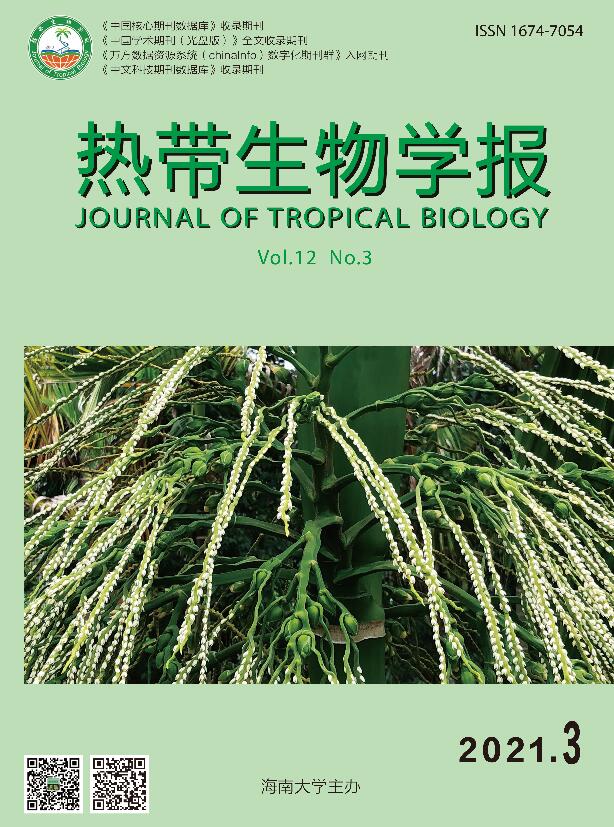-
稻瘟病又称稻热病、火烧瘟等,是水稻生产中一种常见的重要真菌病害[1]。目前,稻瘟病在全世界主要稻区均有发生,其中发病较严重的稻区主要集中在亚洲和非洲[2-3]。在水稻各生育期和各个部位均可发生稻瘟病,其中最严重的是叶瘟和穗颈瘟[4]。在病害流行地区或发病田块,每年造成大约10%~30%的水稻减产,甚至绝产[5]。稻瘟病病原菌的有性态为稻巨座壳菌(Magnaporthe oryzae),属于子囊菌门巨座壳属真菌,无性态为稻梨孢(Pyricularia oryzae),属无性态类梨孢属真菌[6-7]。真菌病毒(Mycovirus)是侵染真菌和卵菌并能够在其体内进行增殖的病毒的统称,广泛存在于主要真菌和卵菌类群中[8]。据报道,真菌病毒在丝状真菌、卵菌和酵母菌中均有分布[9]。根据病毒的基因组核酸类型,真菌病毒可分为单链RNA(single stranded RNA, ssRNA)病毒、单链DNA(single stranded DNA, ssDNA)病毒和双链RNA(double stranded RNA, dsRNA)病毒,其中dsRNA类型的真菌病毒种类最多[10]。目前,稻瘟病菌中报道的真菌病毒主要隶属于产黄青霉病毒科(Chrysoviridae)的Magnaporthe oryzae chrysovirus 1-A (MoCV1-A)、Magnaporthe oryzae chrysovirus 1-B (MoCV1-B)、Magnaporthe oryzae chrysovirus 1-C (MoCV1-C)和Magnaporthe oryzae chrysovirus 1-D (MoCV1-D)[11-14],单分体病毒科(Totiviridae)的Magnaporthe oryzae virus 1 (MoV1)、Magnaporthe oryzae virus 2 (MoV2)和Magnaporthe oryzae virus 3 (MoV3)[13, 15-16],双分体病毒科(Partitiviridae)的Magnaporthe oryzae partitivirus 1 (MoPV1)和Magnaportheoryzaepartitivirus 2 (MoPV2)[17-18],裸露RNA病毒科(Narnaviridae)的Magnaporthe oryzae narnavirus 1 (MoNV1)[19],番茄丛矮病毒科(Tombusviridae)的Magnaporthe oryzae virus A (MoVA)[20]及葡萄孢欧尔密病毒科(Botourmiaviridae)的Magnaporthe oryzae ourmia-like virus 1 (MOLV1)、Magnaporthe oryzae ourmia-like virus 4 (MOLV4)、Pyricularia oryzae ourmia-like virus 1 to 3 (PoOLV1-3)[21-23](表1)。其中,研究最多的病毒是MoCV1-A,其他病毒的研究相对较少。相对于已发现的真菌病毒,稻瘟病菌中的真菌病毒不仅在数量和种属的分布较少[24],而且在与寄主真菌的互作、生物防治应用等方面的研究也较浅,稻瘟病菌中的真菌病毒还有很大的研究空间。笔者对已报道的侵染稻瘟病菌的真菌病毒的形态、基因组结构及其对寄主真菌的影响进行归纳和总结,并对稻瘟病菌真菌病毒的下一步研究与利用进行展望,旨在对稻瘟病菌真菌病毒有一个较全面的了解和认识,为稻瘟病菌真菌病毒的利用和深入研究提供参考。
病毒名称
Viral name分类
Taxonomy核酸类型
Nucleic
acid typeMagnaporthe oryzae chrysovirus 1-A 产黄青霉病毒科(Chrysoviridae)、产黄青霉病毒属(Chrysovirus) dsRNA Magnaporthe oryzae chrysovirus 1-B 产黄青霉病毒科(Chrysoviridae)、产黄青霉病毒属(Chrysovirus) dsRNA Magnaporthe oryzae chrysovirus 1-C 产黄青霉病毒科(Chrysoviridae) dsRNA Magnaporthe oryzae chrysovirus 1-D 产黄青霉病毒科(Chrysoviridae) dsRNA Magnaporthe oryzae virus 1 单分体病毒科(Totiviridae)、单分体病毒属(Totivirus) dsRNA Magnaporthe oryzae virus 2 单分体病毒科(Totiviridae)、维多利亚病毒属(Victorivirus) dsRNA Magnaporthe oryzae virus 3 单分体病毒科(Totiviridae)科、维多利亚病毒属(Victorivirus) dsRNA Magnaporthe oryzae partitivirus 1 双分体病毒科(Partitiviridae)、γ双分体病毒属(Gammapartitivirus) dsRNA Magnaporthe oryzae partitivirus 2 双分体病毒科(Partitiviridae)、γ双分体病毒属(Gammapartitivirus) dsRNA Magnaporthe oryzae virus A 番茄丛矮病毒科(Tombusviridae) +ssRNA Magnaporthe oryzae ourmia-like virus 1 葡萄孢欧尔密病毒科(Botourmiaviridae)、稻瘟泛欧尔密病毒属(Magoulivirus) +ssRNA Magnaporthe oryzae ourmia-like virus 4 葡萄孢欧尔密病毒科(Botourmiaviridae)、欧尔密病毒病毒属(Ourmiavirus) +ssRNA Pyricularia oryzae ourmia-like virus 1 to 3 葡萄孢欧尔密病毒科(Botourmiaviridae)、欧尔密病毒病毒属(Ourmiavirus) +ssRNA Magnaporthe oryzae narnavirus 1 裸露RNA病毒科(Narnaviridae)、裸露RNA病毒属(Narnavirus) +ssRNA Table 1. The list of mycoviruses in Magnaportheoryzae
HTML
-
根据国际病毒分类委员会的最新报告,MoCV1-A属于产黄青霉病毒科(Chrysoviridae)、产黄青霉病毒属(Chrysovirus),首次发现MoCV1-A是在稻瘟菌株S-0412-Ⅱ 1a中[11],病毒粒子直径约为35 nm,属于dsRNA病毒。MoCV1-A含有4个大小不同的dsRNA基因组片段,基因组长度分别为3554、3250、3074、3043 bp。每个dsRNA片段都含有1个大的开放阅读框(open reading frame, ORF),且末端序列比对的结果表明这4个dsRNA的5′-和3′-末端序列相对保守,它很可能与病毒的复制周期、基因表达或病毒粒子包装有关。在dsRNA3和dsRNA4的3′-末端的非翻译区(untranslated region, UTR)中各含有1个腺嘌呤富集区,dsRNA3的3′-末端的UTR区中富含腺嘌呤和尿嘧啶,而dsRNA4的3′-末端的UTR区中富含腺嘌呤和胞嘧啶[11]。这个腺嘌呤富集区的序列与双分体病毒科(Partitiviridae)中的一些成员所具有的中断的polyA尾巴非常相似[25]。
虽然大多数真菌病毒对寄主真菌的侵染并不会导致寄主真菌形成显著的症状,但MoCV1-A侵染会造成稻瘟菌菌丝生长形态异常、细胞形态异常、黑色素减少等异常状态。因此,MoCV1-A是防治稻瘟病的一种潜在的生防菌资源[26]。
-
MoCV1-B属于产黄青霉病毒科(Chrysoviridae)、产黄青霉病毒属(Chrysovirus),于2014年在越南的稻瘟病菌株S-0412-Ⅱ 2a中首次发现[12]。MoCV1-B病毒粒子呈球形,属于dsRNA病毒。含有5个大小不同的dsRNA基因组片段,基因组长度在2.8~3.5 kb之间,且末端序列比对的结果表明这5个dsRNA的5′-和3′-末端序列相对保守。MoCV1-B的每个dsRNA都包含一个ORF,BLAST比对结果表明dsRNA1编码的ORF1蛋白与MoCV1-A编码的依赖RNA的RNA聚合酶(RNA dependent RNA polymerase, RdRp)具有高度的相似性。通过比对MoCV1-A与MoCV1-B的5个dsRNA序列,发现两者具有高度的相似性,尤其dsRNA5相似度达到96.2%,这也表明dsRNA5可能是MoCV1-A和MoCV1-B之间可携带的遗传因子。URAYAMA等[12]的研究表明,dsRNA5在该病毒的复制中不是必要的,缺失dsRNA5的病毒也会造成寄主明显的表型改变,且不会影响该病毒的复制。
与MoCV1-A一样,被MoCV1-B侵染的菌株出现许多异常表型。病毒侵染后,菌丝出现明显异常状态,生长速率降低,出现较大的液泡,分枝明显增加及极性缺失。也出现产孢减少、气生菌丝形成受阻和黑色素减少等异常状态。与MoCV1-A相比,MoCV1-B对寄主的影响更严重[12]。
-
MoCV1-D隶属于产黄青霉病毒科(Chrysoviridae)。2019年在日本的稻瘟病菌菌株APU10-199A中首次报道[14]。MoCV1-D病毒粒子直径约为35 nm,属于dsRNA病毒,含有5个大小不同的dsRNA基因组片段,基因组长度在2.6~3.6 kb之间,且每个片段都包含1个ORF。与MoCV1-A、MoCV1-B一样,MoCV1-D基因组序列5′-末端包含1个高度保守的模体(motif)(5′-GCAAAAAAGAAUAAAGC-3′)。基因组序列比对表明,MoCV1-D与MoCV1-A、MoCV1-B具有高度的相似性,但是相对于其他片段,dsRNA5更短、其同源性较低。dsRNA5对于MoCV1-D的复制似乎是不必要的,因为在缺乏dsRNA5的菌株在继代培养中可以自然复制,在MoCV1-B中也是这样的,但与MoCV1-A有所不同[14]。
MoCV1-D侵染也会抑制寄主真菌的生长,造成色素积淀异常、菌落白化、气生菌丝减少等症状。Higashiura等[14]还发现这些异常症状很可能与黑色素合成的中间体scytalone缺乏积累有关,这表明MoCV1-D也是防治稻瘟病的潜在生防资源之一。
-
MoV1隶属于单分体病毒科(Totiviridae)中的单分体病毒属(Totivirus)。MoV1具二十面体状的病毒粒子结构,首次从稻瘟病菌菌株TH65-105中分离获得[15]。MoV1属于dsRNA病毒,全长为5359 bp,包含2个ORF(ORF1和ORF2),编码2个分子量为77 kDa和91 kDa的蛋白质,序列比对结果表明,其分别与单分体病毒科的外壳蛋白(coat protein, CP)和RdRp具有高度相似性。MoV1的ORF1和ORF2是完全分开的,这也是与单分体病毒属(Totivirus)其他病毒所不同的特征,单分体病毒属(Totivirus)其他病毒的ORF之间都有小部分的重叠。MoV1的RdRp系统发育树结果表明,MoV1与隶属于单分体病毒属(Totivirus)的病毒聚为一支[15]。
YAMASHITA等[27]通过观察带毒菌株和无毒菌株在培养基上的生长情况,明确了MoV1对寄主真菌的形态没有明显的影响。
-
MoV2属于单分体病毒科(Totiviridae)中的维多利亚病毒属(Victorivirus),在稻瘟病菌菌株Ken 60-19中首次发现[16]。该病毒具有球状的病毒粒子结构,直径约为37 nm,包含1个长度为5193 bp的dsRNA基因组。基因组包含2个重叠的ORF,重叠的四核苷酸为AUGA,包含ORF1的终止密码子(UGA)和ORF2的起始密码子(AUG)。5′-UTR和3′-UTR两侧长度分别为274 bp和63 bp。ORF1编码了788个氨基酸的假定蛋白,分子量约为82 kDa;ORF2编码了830个氨基酸的假定蛋白,分子量约为91 kDa,序列比对表明,其与单分体病毒科的病毒、尤其是Gremmeniella abietina RNA virus L1 (GaRV-L1)具有高度的相似性。有报道称,在稻瘟病菌中发现有来源于MoV2的小干扰RNA[28]。为了分析MoV2与其他dsRNA真菌病毒的亲缘关系,使用MoV2的RdRp和CP序列与单分体病毒科(Totiviridae)的不同成员一起,采用邻接法(neighbor-joining,NJ)分别构建系统发育树,结果表明,两种序列构建的系统发育树结果相似,MoV2与GaRV-L1,Gremmeniella abietina RNA virus L2(GaRV-L2),Sphaeropsis sapinea RNA virus 2(SsRV2),Coniothyrium minitans mycovirus(CmRV)以及Epichloe festucae virus 1(EfV1)聚为一支,与MoV1在不同的分支上。以上结果进一步证实MoV2是隶属于单分体病毒科(Totiviridae)中的维多利亚病毒属(Victorivirus)的一个新病毒[16]。
与大多数维多利亚病毒属病毒一样,MoV2侵染寄主真菌不会引起任何明显的症状,也没有显著改变真菌的致病性。然而,水稻叶鞘接种实验结果表明,MoV2侵染稻瘟病菌可以促进菌丝的生长,这很可能是由于MoV2侵染稻瘟病菌导致稻瘟醇(pyriculol)大量增加导致,具体机制目前尚不明确[29]。
-
MoV3属于单分体病毒科(Totiviridae)科中的维多利亚病毒属(Victorivirus),于稻瘟病菌菌株QSP5中首次发现;同时还在该菌株中发现有Magnaporthe oryzae chrysovirus 1-C (MoCV1-C)共同侵染,这也是首次报道的新型真菌病毒[13]。通过cDNA克隆获得MoV3的全基因组序列,长度为5181 bp,包含2个ORF。靠近5′-末端的ORF1编码783个氨基酸的CP,分子量约为80.9 kDa,靠近3′-末端的ORF2编码824个氨基酸的RdRp,分子量约为90.5 kDa。与MoV2一样,2个ORF之间有四核苷酸的重叠区域。5′-UTR和3′-UTR两侧长度分别为274 bp和63 bp。基于RdRp和CP序列系统进化发育分析表明,MoV3与维多利亚病毒属(Victorivirus)的GaRV-L1病毒亲缘关系较近[13]。
唐利华等[30]通过观察,比较正常稻瘟病菌菌株和只含有MoV3的稻瘟病菌菌株QSP5-9的生物学特性,结果表明,MoV3侵染稻瘟病菌并不会引起寄主显著的异常症状,菌落呈白色,菌丝、分生孢子和附着胞均正常。
-
MoPV1属于双分体病毒科(Partitiviridae)中的γ双分体病毒属(Gammapartitivirus),于2016年在稻瘟病菌菌株NJ20中首次发现[17]。MoPV1的基因组含有2个dsRNA片段,dsRNA1和dsRNA2,其基因组长度分别为1763 bp和1491 bp。生物信息学分析表明,2个dsRNA片段各包含1个ORF,dsRNA1编码RdRp,dsRNA2编码CP。dsRNA1片段5′-UTR和3′-UTR两侧长度分别为99 bp和45 bp;dsRNA2片段5′-UTR和3′-UTR两侧长度分别为87 bp和142 bp。2个dsRNA的5′-端的前3个碱基对(bp)是保守的,3′-端都有poly(A)-poly(U)尾巴[17]。
病毒转染试验结果表明,MoPV1侵染对寄主的菌落形态、菌丝尖端形态、生长速度、分生孢子形态和致病力均无明显影响,但可以使分生孢子产生量明显降低。
-
MoPV2属于双分体病毒科(Partitiviridae)中的γ双分体病毒属(Gammapartitivirus),于2017年在中国湖北省宜昌市稻瘟菌株菌株YC13中首次发现[18]。MoPV1的基因组含有2个dsRNA片段,dsRNA1和dsRNA2。dsRNA1包含1个单独的ORF,编码了539个氨基酸的RdRp,分子量约为62 kDa;dsRNA2也包含1个单独的ORF,编码420个氨基酸的CP,分子量约为47.3 kDa。采用MoPV2的RdRp序列与其他相关病毒构建系统发育树,结果表明,MoPV2与γ双分体病毒属(Gammapartitivirus)的病毒聚为一支,因此,判断MoPV2是γ双分体病毒属(Gammapartitivirus)的一个新型病毒。
此外,病毒粒子转染试验结果表明,MoPV2侵染会造成寄主真菌分生孢子显著减少,且对大麦植株的致病性也有所降低,但其他生物学特征均无明显影响[18]。
-
MoVA属于番茄丛矮病毒科(Tombusviridae),是2016年在中国湖南的稻瘟病菌菌株HN-018中发现的新型真菌病毒,是稻瘟病菌中首个报道的+ssRNA病毒[20]。MoVA的全基因组序列长度为3246 nt,包含2个ORF。ORF1编码265个氨基酸,编码的蛋白质与Diaporthe ambigua RNA virus 1(DaRV1)的ORF1具有较高的同源性,分子量为29.2 kDa;ORF2编码494个氨基酸,编码的蛋白与2个未分类的+ssRNA病毒DaRV1和Sclerotinia sclerotiorum umbra-like virus 1 (Ssu-LV1) 具有较高的同源性。序列5′-UTR和3′-UTR两侧长度分别为386 nt与448 nt。采用邻接法(NJ),以MoVA的RdRp序列与番茄丛矮病毒科(Tombusviridae)、减毒病毒科(Hypoviridae)、裸露RNA病毒科(Narnaviridae)的部分成员以及Ssu-LV1和Diaporthe ambigua RNA virus 1(DaRV1)等病毒一起构建系统发育树。系统进化分析结果表明,MoVA与DaRV1和Ssu-LV1处在同一个分支,在进化上与番茄丛矮病毒科(Tombusviridae)的植物病毒具有亲缘关系,但是在基因结构上有着明显的不同,所以推断MoVA是一个新型的真菌病毒[20]。
-
MOLV1属于葡萄孢欧尔密病毒科(Botourmiaviridae)中的稻瘟泛欧尔密病毒属(Magoulivirus),于2016年在稻瘟病菌菌株Guy11中分离得到,是稻瘟病菌中被报道的第二个+ssRNA病毒[22]。MOLV1包含1个818 nt的ORF,编码605个氨基酸,分子量为67.12 kDa,与植物病毒欧尔密病毒属(Ourmiavirus)和真菌病毒类欧尔密病毒(Ourmia-like)具有较高的同源性,但是具有polyA尾巴、5′-UTR的3个胞嘧啶残基和3′-UTR的3个鸟嘌呤残基不具有保守性等许多新特性,进一步证实了MOLV1是一个新的真菌病毒[22]。
-
MOLV4属于葡萄孢欧尔密病毒科(Botourmiaviridae)中的欧尔密病毒病毒属(Ourmiavirus),是2019年在中国湖南省稻瘟病菌HNDW-6菌株中发现的+ssRNA病毒[23]。MOLV4基因组长度为2497 bp,包含1个编码RdRp的ORF,序列5′-UTR和3′-UTR两侧长度分别为413 bp和29 bp,5′-UTR的前24个碱基形成茎环结构,3′-UTR也具有1个茎环结构。病毒基因组结构和系统发育分析结果表明,MOLV4与植物病毒欧尔密病毒属(Ourmiavirus)和真菌病毒类欧尔密病毒(Ourmia-like)具有较高的相似性。生物信息学分析发现,许多数据库中也存在该病毒相关的序列,如转录组鸟枪库(TSA)和表达序列标签数据库(ESTdb)等,这表明该病毒在自然界广泛存在。
比较携带MOLV4菌株、脱毒菌株及对照菌株的生物学特性,结果表明,MOLV4对稻瘟病菌株的形态及菌丝生长速率无显著影响[23]。
-
PoOLV1-3是2019年在侵染小麦的稻梨孢(稻瘟病菌)中被发现的[21],在PoOLV1的5′-末端和PoOLV3的3′-末端分别有1个连接紧密的类卫星RNA,命名为PoOLV1-and PoOLV3-associated RNAs(以下称为ARNA1和ARNA3)。测序结果表明,PoOLV1-3的基因组序列全长分别为2528、1671、2557 nt。ARNA1和ARNA3长度为639 nt和514 nt。PoOLV1–3均具有1个编码RdRp的ORF,ARNA1和ARNA3的正义链上也分别有1个小的ORF,但该蛋白与数据库中的蛋白序列没有显著的相似性。为了研究PoOLV与已知相关病毒的亲缘关系,采用邻接法(NJ)构建系统发育树。分析结果表明,PoOLV与植物病毒欧尔密病毒属(Ourmiavirus)聚为一支,欧尔密病毒属(Ourmiavirus)分为两个亚支,分别以SsOLV1和SsOLV2为代表,PoOLV1与SsOLV2聚为一支,PoOLV2和PoOLV3与SsOLV1聚为一支[21]。
-
MoNV1属于裸露RNA病毒科(Narnaviridae)中的裸露RNA病毒属(Narnavirus),于2020年在中国江苏省稻瘟病菌菌株NJ16中首次发现[19]。MoNV1是全长为2452 nt的+ssRNA病毒,包含1个含有782个氨基酸的ORF,分子量为89.4 kDa,编码了1个RdRp的保守结构域。保守功能域数据库(CDD)和多个氨基酸序列比对结果表明,该RdRp结构域包含了5个保守的模体(motifs),从motif I到motif V,这是+ssRNA病毒RdRp的特征。此外,末端序列分析结果表明,MoNV1的5′-和3′-末端均具有茎环结构,该结构很可能在病毒的复制和翻译中起重要作用[31]。为了分析MoNV1与其他+ssRNA病毒的亲缘关系,使用MoNV1的RdRp序列与裸露RNA病毒科(Narnaviridae)、葡萄孢欧尔密病毒科(Botourmiaviridae)和光滑噬菌体科(Leviviridae)的不同成员一起,采用最大似然法(maximum likelihood, ML)构建系统发育树,分析结果表明,MoNV1属于裸露RNA病毒科(Narnaviridae)中的裸露RNA病毒属(Narnavirus)的一个新病毒[19]。
1.1. Magnaporthe oryzae chrysovirus 1-A (MoCV1-A)
1.2. Magnaporthe oryzae chrysovirus 1-B (MoCV1-B)
1.3. Magnaporthe oryzae chrysovirus 1-D(MoCV1-D)
1.4. Magnaporthe oryzae virus 1 (MoV1)
1.5. Magnaporthe oryzae virus 2 (MoV2)
1.6. Magnaporthe oryzae virus 3 (MoV3)
1.7. Magnaporthe oryzae partitivirus 1 (MoPV1)
1.8. Magnaporthe oryzae partitivirus 2 (MoPV2)
1.9. Magnaporthe oryzae virus A (MoVA)
1.10. Magnaporthe oryzae ourmia-like virus 1 (MOLV1)
1.11. Magnaporthe oryzae ourmia-like virus 4 (MOLV4)
1.12. Pyricularia oryzae ourmia-like virus 1 to 3 (PoOLV1-3)
1.13. Magnaporthe oryzae narnavirus 1 (MoNV1)
-
稻瘟病是水稻生产上的重要病害之一,世界上主要的稻区均有发生,给水稻生产造成了重大的经济损失。目前,防治稻瘟病的主要方法是化学防治,但不当的用药量、施药方法等问题极易导致防效不佳,且容易造成环境污染,对人畜的健康带来威胁。培育和利用抗病品种是防治稻瘟病的一种经济、有效的措施,但是稻瘟病菌的变异性强,很多抗病品种种植几年后,其抗性也逐渐丧失[32]。
为了解决化学防治带来的问题,环境友好型的生物防治备受人们的青睐,人们认识到利用真菌病毒进行植物真菌病害生物防治有巨大潜力[33-34]:1978年GRENTE和BERTHELAY-SAURET将栗疫病菌(Cryphonectria parasitica)的低毒病毒Cryphonectria hypovirus 1(CHV1)接种到患栗疫病的栗树病斑处后,成功将该病防治[35-36]。2010年,姜道宏课题组从核盘菌中发现了首例DNA病毒,命名为Sclerotinia sclerotiorumm hypovirulence-associated DNA virus 1 (SsHADV-1)[37],该病毒侵染会造成寄主真菌致病力下降,且不会引起油菜及田间其他易感寄主植物产生异常症状[38];更重要的是,该病毒可以在田间传播并侵染其他真菌,极大地推进了将真菌病毒运用到生物防治中去的设想[39]。将真菌病毒运用于生物防治的优势不仅在于对环境友好,更在于防治的持久性,携带低毒病毒的真菌菌株一旦进入田间系统内,便可以在田间持持续传播侵染[40]。
真菌病毒在真菌界分布十分广泛,低毒相关的真菌病毒在植物病害防控中发挥着重要的作用[41],使真菌病毒成为了良好的生物防治资源[42]。但是,要想将稻瘟病菌的真菌病毒运用到生物防治中去,还有很多困难需要克服。第一、目前已报道稻瘟病菌中的真菌病毒种类极少,其中低毒真菌病毒更是寥寥无几。稻瘟病菌的真菌病毒中报道的低毒病毒目前就只有MoCV1-A、MoCV1-B以及MoPV2,但是也有研究报道称,这可能会促进稻瘟病菌新的致病小种的发展[43]。近年来,准确、快速的高通量测序技术逐渐成熟且测序成本降低,人们快速地发现了大量的真菌病毒:2012年,FELDMAN等[44]利用深度测序技术在植物内生真菌中存在大量的真菌病毒。第二、营养不亲和性限制了真菌病毒在田间的传播,这也是目前限制真菌病毒应用最主要的因素[45]。随着现代分子生物学的发展,这一问题也有望得到解决,2012年,CHOI等[46]就通过敲除栗疫病菌营养不亲和的相关基因后,发现其传播效率显著提高。第三、普遍缺乏体外传播途径。2010年,URAYAMA等[11]发现稻瘟菌真菌病毒MoCV1病毒粒子可以释放到发酵液中,并侵染不带病毒的菌株,尽管目前机制还不清楚,但给研究开拓了新的思路。






 DownLoad:
DownLoad: